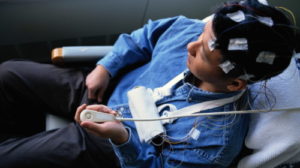Emergencies can occur at any moment, often when we the very least expect them. Whether it's a small injury or a substantial medical crisis, having the expertise and skills to respond efficiently can mean the difference in between life and death. In this detailed overview, we're diving into the world of first aid-- particularly, efficient first-aid training approaches that prepare you for emergencies.
First help is not practically wrapping wounds; it includes a wide range of abilities targeted at preserving life, avoiding more injury, and promoting healing. With the appropriate first help course, anyone can become a very useful possession in emergency situations. In this short article, we will discover numerous first-aid training methods and their relevance, making sure that you are well-prepared for any situation.
Understanding the Importance of First Aid Training
What is Very first Aid?
First aid refers to the instant assistance given to someone suffering from an ailment or injury till expert clinical aid gets CPR Training Geelong here. It consists of standard procedures designed to maintain an individual's condition and protect against further complications.
Why is First Aid Important?
Preservation of Life: Quick action can conserve lives. Prevention of Further Injury: Correct strategies can prevent intensifying conditions. Promoting Recovery: Very early treatment help in faster recovery. Building Confidence: Understanding how to react reduces panic throughout emergencies.The Duty of First Aid Courses
A well-structured first help course shows important skills such as CPR (Cardiopulmonary Resuscitation), wound monitoring, choking response, and more. These courses often finish in receiving a first help certificate, which verifies your proficiency.
Types of First Aid Training Available
Basic First Aid Courses
Basic courses cover essential subjects consisting of:
- Managing cuts and scrapes Treating burns Recognizing signs of shock
Advanced First Aid Courses
These are for people looking for sophisticated understanding:
- Management of serious bleeding Use of defibrillators Advanced CPR techniques
Specialized Courses
Mental Wellness First Aid: Concentrate on helping people experiencing psychological health crises. Childcare First Aid: Tailored for those working with babies and children. Manual Handling Training: Educates safe lifting strategies to stop injuries.Choosing the Right First Aid Program Near You
Identifying Your Needs
When searching for a "first aid training course near me," consider what you aim to discover:
- Are you preparing for a particular job (like mentor or medical care)? Do you require certification for job purposes?
Researching Options
Look into neighborhood service providers using approved courses:
- Check reviews and testimonials. Ensure they cover pertinent subjects like CPR training or mental health and wellness first aid.
Certifications and Accreditations
Confirm that your chosen training course results in acknowledged certifications like HLTAID011 Give First Aid or HLTAID009 Supply Cardiopulmonary Resuscitation.
Preparing for Emergency situations with Efficient First-Aid Training Strategies
Having functional knowledge is important in emergencies. Below's exactly how effective first-aid training equips you:
Hands-On Practice: The majority of training courses include hands-on practice where participants replicate real-life scenarios. Interactive Learning: Engaging activities advertise better retention than passive learning methods. Qualified Instructors: Discovering from experienced experts guarantees precise understanding transfer. First Aid Course GeelongCore Components of First-Aid Training Programs
CPR Techniques (What Does CPR Mean?)
CPR stands for Cardiopulmonary Resuscitation, a lifesaving strategy beneficial in emergency situations when a person's breathing or heartbeat has stopped.
Basic Action in Doing CPR:
Call emergency situation services immediately. Place your hands on the center of the individual's chest. Push hard and fast (at the very least 100 compressions per min). Provide rescue breaths if educated to do so.DRSABCD Action Plan
The DRSABCD strategy is vital:

Mental Health First Aid Strategies
In today's world, mental health concerns are progressively common; for this reason recognizing how to assist a person in distress is vital.
Recognizing Signs
Understanding signs such as too much stressing, withdrawal from activities, or extreme mood modifications belong to efficient psychological health and wellness first aid training.
Approaching Someone in Crisis
Approach calmly and pay attention proactively without judgment. Offer assistance however do not pressure them right into sharing greater than they fit with. Encourage professional help when necessary.FAQs concerning First-Aid Training
1) For how long does a first-aid certification last?
Most certifications last around 3 years prior to needing revival through recertification courses.
2) What is included in a basic first-aid course?
A normal program consists of CPR training, wound treatment, dealing with burns and fractures, reacting to choking events, and more.
3) Where can I locate first-aid training courses near me?
You can browse online making use of terms like "first aid course near me" or examine local community centers and medical facilities that provide training sessions.


4) Is there on-line first-aid training available?
Yes! Lots of companies give thorough on the internet first-aid programs that consist of interactive components and assessments.
5) Can I take a specialized first-aid course?
Absolutely! Depending on your requirements-- such as child care setups or outdoor tasks-- there are specialized training courses readily available tailored to specific situations.
6) What needs to I do after completing my first-aid course?
After completion, practice routinely with close friends or family members to keep your abilities sharp; think about offering as well!
Conclusion
In conclusion, mastering efficient first-aid strategies prepares individuals to handle emergencies with confidence and effectively while reinforcing neighborhood resilience during dilemmas-- whether you're responding in your home or out in public areas such as schools or workplaces.
Taking action by enlisting in an appropriate first-aid course assists equip you not just with essential lifesaving abilities however likewise cultivates assurance understanding that you're ready when it counts most! So proceed-- take that step towards being prepared today!
By investing time right into recognizing these necessary principles surrounding "Getting ready for Emergencies with Effective First-Aid Training Techniques," you'll be well on your method towards ending up being a positive -responder efficient in making significant payments during vital moments!